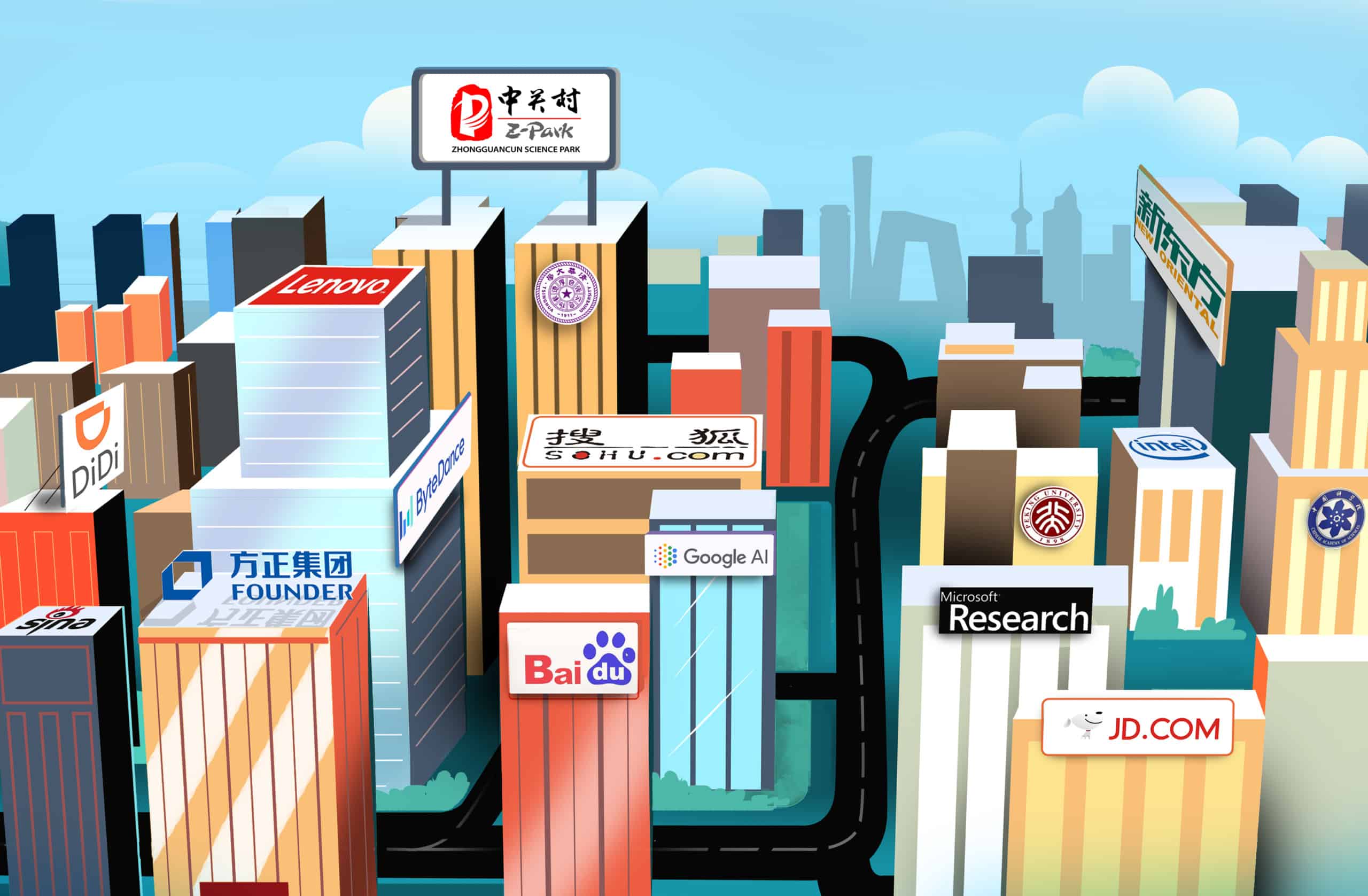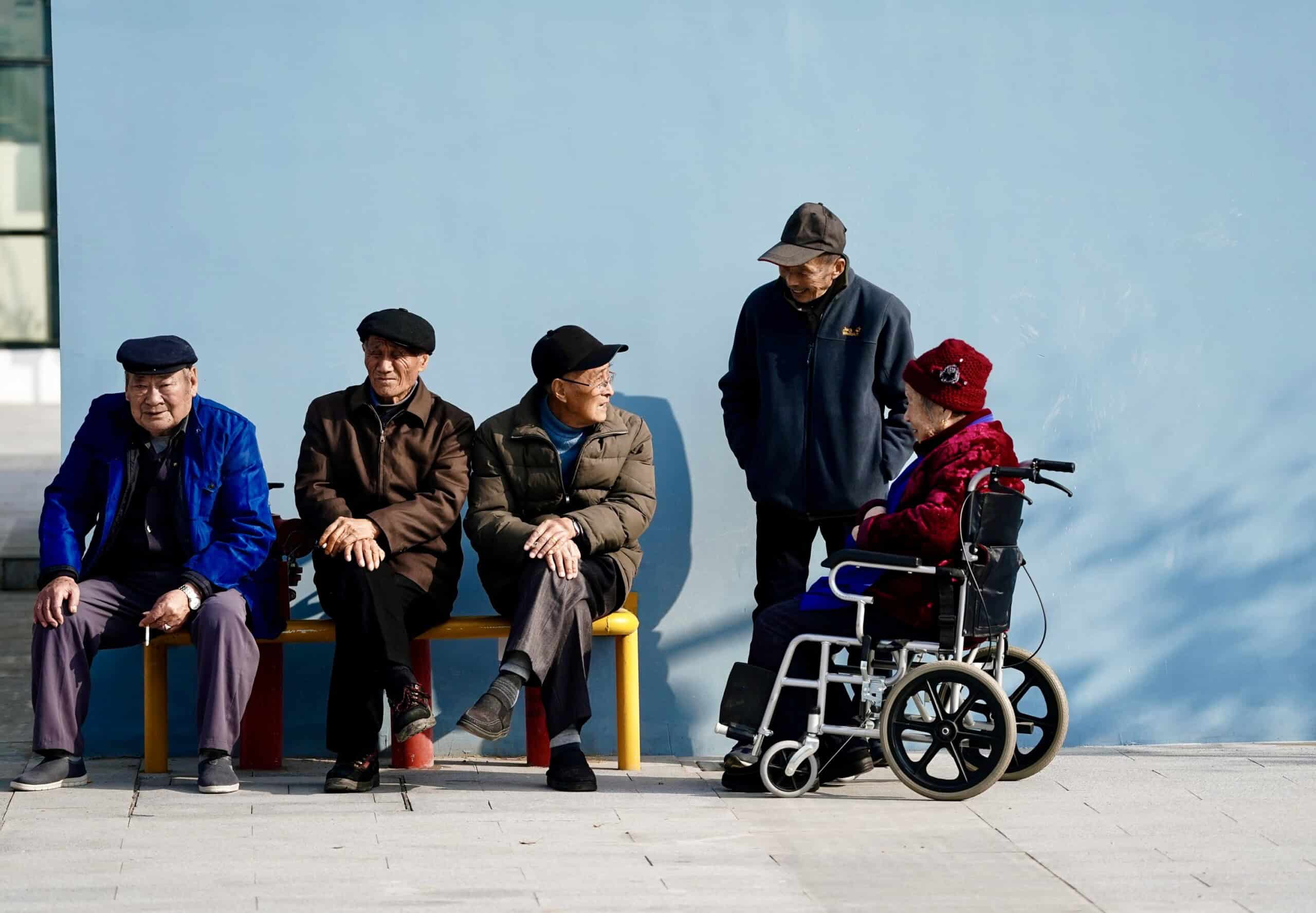
In September 2014, Cho-Nan Tsai, a software engineering manager in Pasadena, California, got a phone call that felt like the beckoning of history. A fellow alumnus from Columbia University had an idea for a startup that could disrupt China’s wild digital marketing scene. Did Tsai want in?
“He told me there are a lot of these [venture capital firms] popping up in Beijing, and companies were getting funded very easily,” Tsai recalls.

Credit: TechCrunch
Indeed, at the time, China’s internet scene was booming, and venture capitalists were scouring Beijing for the next Jack Ma. Innovation Works, a Beijing-based incubator founded by ex-Google executive Kai-fu Lee, had just raised $275 million to fund new internet projects. Another fund, 36Kr, had bagged a Series D from Ma’s Ant Group and was focused on the capital’s startups. Tsai, then in his early 30s, felt this was his chance.
“Back then, Beijing was the talk of the town,” he says. “I wanted to have a front row seat.”
By early 2015, he and his new co-founders had set up shop in Zhongguancun Science Park, a 38-square-mile-block in the northwest of Beijing that is often referred to as China’s Silicon Valley. A brief stroll north landed him at the gates of China’s top universities, Peking and Tsinghua, and a stone’s throw away were the research centers of Microsoft and Google. Though its offices housed some of China’s brightest minds and biggest-dreaming startups, Zhongguancun didn’t look like the California archetype. If Silicon Valley was an affluent playground of well-kept gardens, gourmet cafeterias and indoor slides, Zhongguancun was an angsty concrete jungle of car horns, hawkers and cigarette butts.
Rent was pricey and Beijing traffic was notoriously sclerotic, so Tsai ran his startup — a live streaming platform that helped influencers monetize their audience — from his loft. But being in Zhongguancun was worth it. Over the last 20 years, many regions have tried to imitate Silicon Valley’s historic mix of talent and market dynamism — often with disappointing results. There was the Silicon Peach of Atlanta, the Silicon Spuds of Idaho, as well as overseas trials in Israel, Taiwan and Egypt. But Zhongguancun had bucked the trend.
Since the late 1990s, Zhongguancun has been the epicenter of the Chinese dream, a place where almost anyone with talent could found a tech startup. When Tsai arrived in 2015, the region was going through a particularly intense phase. The internet had latched onto consumer desire with nuclear success, and, with his live-streaming startup, Tsai was joining a long legacy of consumer internet crazes — from video-streaming to ecommerce to mobile payments — that molded Zhongguancun into the “innovation cluster” it is today.
“I remember everything was around shopping and e-commerce, and all the activity online was for consumers,” Tsai recalls.
But shortly after Tsai arrived, Zhongguancun’s startup ecosystem began to contract, with a series of consolidations in the consumer sector. Didi had subsumed its foreign competitor, Uber, and Meituan grew into a peerless all-encompassing super app. Internet technologies became oligarchic in structure, controlled mostly by the acronym BAT (Baidu, Alibaba and Tencent). The trifecta took hold of the country’s tech economy, suppressing and swallowing newly emerging startups.
Tsai’s live-streaming startup soon ran out of cash. He returned to California where he joined a fintech startup, while rising living costs pushed many of his peers to cities like Shenzhen and Chengdu. Along the main Fourth Ring Road, office buildings once brimming with starry-eyed youths were now taken up by the global headquarters of Chinese companies as well as institutional investors. For the first time, victory in Zhongguancun seemed to rely more on market power than technical mastery.
“In the Beijing of the past, the tolerance for failure was exceptional,” says Liu Min, a researcher at the Zhongguancun Development Group, the state-owned enterprise that manages Zhongguancun. “Lately, that tolerance has waned.”
Failure might have been better tolerated in the “catch up” period, but in recent years, Zhongguancun has become equal to, or at least comparable, in prestige and power to Silicon Valley. According to a Harvard Business School study, Zhongguancun is the second-largest tech hub in the world by venture funding as well as concentration of ‘unicorns’ (startups with over a billion-dollar valuation). It is home to industry heavyweights such as the PC-maker Lenovo, search giant Baidu and smartphone maker Xiaomi. Of the six highest-valued startups in the world in 2020, three were headquartered in California (SpaceX, Stripe and Airbnb) and three in Zhongguancun (Bytedance, Didi and Kuaishou).
How do you make China’s many technology parks stand out and enjoy global prestige in the next 10–15 years? That’s the interesting problem that China has to solve.
Cho-Nan Tsai, FinTech Entrepreneur and CTO
But Zhongguancun has recently felt the pains of its own success. The decades-long innovation drive in Zhongguancun — and elsewhere in China — has led to dwindling manufacturing jobs, and the authorities came to believe that China’s tech monopolies pose a threat to social order, including game-addiction and a culture of overwork. Critics say that Zhongguancun’s investors and startups devoted time and resources to the tools of the digital age as they applied to the human psyche, but largely ignored their uses in applications like agriculture, energy and manufacturing.
The Chinese government’s tech crackdown last year, experts say, was a rebuke of the consumer-driven innovation model. Many of Zhongguancun’s largest internet companies, such as New Oriental Education, ByteDance and JD.com, have been forced back to the drawing board. Meanwhile, a new series of “pilot reforms” is unfolding to revamp Zhongguancun’s image away from a consumer tech paradise to a digital manufacturing powerhouse. Back in 2015, for instance, Tsai recalls only two startups engaged in the hardware business at his incubator. Now, the incubator hosts enough hardware startups to have its own “industrial innovation” web vertical.
Li Chen, the former chief economist at Soochow Securities, has called this new innovation agenda a rejection of the “American road” with its penchant for gamified and financialized products. Instead, he said, China is turning toward the “German” road, a reference to the high-tech industrial processes of the Rhinelands.

Design: Hiram Henriquez
Zhongguancun has long served as a petri dish for China’s experiments in technological reforms, but the question now is whether China can reinvent Zhongguancun while still replicating its past success. The old model, after all, grew out of a rare combination of digital consumerism, American opportunism and a growth-obsessed Communist state. Now, rising tensions with the U.S. have closed out foreign markets and collaborators, and Xi Jinping has reoriented China’s economy away from indiscriminate growth to a more sustainable, “high-quality” growth track. With Chinese tech entrepreneurs being encouraged to eschew the speculative and consumerist habits of American capitalism, Zhongguancun is spurning some of the forces that once nurtured its rise.
From his home in California, Tsai wonders what this all means for Zhongguancun’s future.
“How do you make China’s many technology parks stand out and enjoy global prestige in the next 10–15 years,” he asks. “That’s the interesting problem that China has to solve.”
A NEW EXPERIMENT
The story of China’s home-grown innovation engine began in 1979, one year after Deng Xiaoping’s policy of reform and opening up. That year, Chen Chunxian, a plasma physicist at the Chinese Academy of Science, took a tour of Silicon Valley and Route 128 near Boston. Inspired by the marriage of research and entrepreneurship he saw in America, Chen set up his own make-shift business upon his return. He conducted research by day and began a consulting service at night. When word of his deeds got out, colleagues accused him of mutiny against the scientific cause. An investigation ensued, and Chen’s business was shuttered.

But the wheels of Deng’s reforms had been set into motion. When a sympathetic journalist at Xinhua, the official state media, wrote an internal report to the Communist Party brass on Chen’s behavior, he framed it not in terms of betrayal, but as a “new experiment in technological diffusion.” Two days later, the Party agreed. In a 1983 public notice, General Secretary Hu Yaobang recognized Chen by name and called his approach the “new road.” (A colleague of Chen’s would later compare this notice to the moment when a platoon is saved by reinforcements during battle.)
A few months later, Chen established Beijing’s first private enterprise: the Huaxia New Technology Development Institute, an electronics consultancy. For his location, he chose a quiet suburb, so soporific as to have once served as a cemetery for male servants of the Qing court. Beijingers called it Zhongguancun, “the eunuch’s village.”
Word spread, and like ancient settlers of the Indus River Valley, more researchers gathered along “Electronics Street,” a thoroughfare with easy access to computer parts and repairs. Chen’s company was eventually overshadowed by a new crop of firms, among them Lenovo, which was founded in 1984, and initially called Legend Computer.
In its early days, Zhongguancun’s streets were overcrowded with shops selling cheap fare, from pirated software to fake diplomas. But in 1988, Beijing aspired for it to become something greater. It christened the region as an experimental high-tech zone, leading to a surge in government assistance. For new entrepreneurs, the government provided free rent, tax exemptions and help navigating the bureaucracy.
Whatever the [U.S.] company wanted, they’d make their own headquarters, their own research centers, and that’s how they formed. China is not quite the same.
Zhang Jinhui, general manager of Zhongguancun Software Park
“Central planning wasn’t a bad thing,” says Yu Zhou, a geographer at Vassar College and the author of The Inside Story of China’s High-Tech Industry: Making “Silicon Valley” in Beijing. “It was the backdrop; it gathered all the talent and research institutes into one place.”
In 1997, Lenovo overtook its foreign competitors in sales to become China’s largest PC maker. Alerted to its potential, the Communist Party further bolstered Zhongguancun in 1999, designating the region as the Zhongguancun Science and Technology Park and elevating its status to that of the special economic zones in Shenzhen and Shanghai. The park’s management was brought under the aegis of the State Council and the Beijing municipal government. New private and public funds poured into R&D and infrastructure. American tech giants, such as Microsoft and Google, set up research outposts in the district. And American venture funding came too.
“The market played a big role, but it was mainly government-led,” says Zhang Jinhui, the general manager of Zhongguancun Software Park, referring to the state-led development and construction of his park. This was different from Silicon Valley, he notes, which grew semi-autonomously. “Whatever the [U.S.] company wanted, they’d make their own headquarters, their own research centers, and that’s how they formed,” he says. “China is not quite the same.”
China did, however, choose to take a backseat approach to foreign investors. As a torrent of overseas talent — known as haigui (“returnees of the sea”) — returned to China with dreams of starting their own companies in Zhongguancun, they brought their ties to U.S. funding with them. Some of Silicon Valley’s leading venture capital firms seeded startups like Baidu and Sina.
“The government was AWOL,” says Sebastian Mallaby, the author of The Power Law: Venture Capital and the Making of the New Future. “And the venture capitalists made it happen.”
“It was a surreal atmosphere,” says Chen Qiufan, a former Baidu engineer turned sci-fi novelist. “When you sat at a café, you could hear people talking about something in the scale of billions.” Casual conversations became brainstorming sessions, he recalls, and deals were brokered on sidewalks.
According to Kaiser Kuo, the host of the Sinica Podcast and ex-director of international communications at Baidu, most of China’s early internet companies were built by “American-educated founders, funded by American venture investors and listed on American capital markets.”

But the Communist Party provided the physical infrastructure. In 2010, Beijing established the Zhongguancun Development Group (ZDG), which merged together more than 16 high-tech park operators and city funds into one cohesive unit. ZDG is tasked with land development and construction, operating the various parks and helping startups secure financing.
“It operates many parks under its umbrella,” says Liu, the researcher at ZDG, adding that the group now has its own investment infrastructure and an assortment of consulting services. “We have everything from hard tech pilot spaces, which helps companies like cell phone manufacturers test their prototypes, to the Zhongguancun IC [Integrated Circuits] Center, which helps chipmakers with intellectual property rights,” he says.
Taken together — the U.S. capital and expertise in individual companies, and the state support of Zhongguancun as a whole — these efforts set the stage for Zhongguancun companies to capitalize on the coming smartphone revolution. After Apple debuted the iPhone in China, in 2008, cheaper domestic smartphones made by Lenovo and Zhongguancun-based Xiaomi flourished along Electronics Street, and helped kick China’s smartphone adoption into overdrive. By 2011, with the aid of other smartphone makers near Shenzhen, China was able to overtake the U.S. as the largest smartphone market. This led to the emergence of a massive, mobile-first generation and made it possible for Zhongguancun startups to solve local problems with e-commerce solutions aimed at, among other things, eating and traveling.

“You can really understand the internet in China in terms of these strange crazes,” says Kuo. “There was the YouTube-inspired video-streaming craze led by Tudou and Youku in the aughts, the Groupon clone wars of the 2010s, and the ecommerce revolution of JD.com and Alibaba.”
While many of these companies drew inspiration from Silicon Valley counterparts, they quickly surpassed them. The government’s “Made in China 2025” policy, which was introduced in May 2015, reinforced the message that Chinese tech companies should be leading, not following, and path-breaking apps from Meituan to Douyin went on to create their own universe of tools and possibilities. By 2016, the value of Chinese mobile payments reached $790 billion — 11 times that of the United States. As Connie Chan, a partner at Andreessen Horowitz, told a group of reporters in 2017, the term “China copycat” now referred to “a U.S. company copying China.”
For Anita Huang, the chief marketing officer at Sinovation Ventures1Kai-fu Lee’s Innovation Works was rebranded to Sinovation in 2016., a Chinese venture capital firm, this moment was crystalized in 2018, when she organized a tour of Silicon Valley for some of Zhongguancun’s entrepreneurs. In the past, such trips to Silicon Valley often felt like pilgrimages to a high-tech mecca. But on that trip, Huang says, “Chinese entrepreneurs were complaining to me about how it’s so difficult to order food at 9 p.m. at their hotel. There’s no Meituan food delivery app. Even my personal experience riding Uber, I would say the experience was much worse [than Didi].”
‘EXPLICIT POLICY’
With Zhongguancun companies officially broken out of their American molds, innovation has increasingly become Chinese-led — Chinese priorities, Chinese talent and Chinese money.
Indeed, already a very different kind of entrepreneur is emerging from Tsai’s day. Feng Chong, for instance, founded a Beijing-based VR and light-projection startup after graduating from Beihang University. He estimates that among his circle of entrepreneurs, only 5 percent have studied abroad.
“People like Charles Zhang [of Sohu] and Jack Ma learned of the internet from the West only because that was the period when the distance between the West and China was relatively large,” says Feng. “Now China’s information ecosystem is well-developed. Entrepreneurs don’t need to go abroad anymore.”
Feng’s products appear in education hardware, surgical tools and home appliances. Unlike Tsai, who spent his days holed up in a loft writing code for livestreamers, Feng’s business necessitates that he spend time with semiconductor importers as well as factories outside the capital. His fellow entrepreneurs spend time in labs or farms. Such diffusion into “hard” industries is exactly what the Chinese government is hoping for.
In official forums, internet era buzzwords like “disruption,” “sharing” or “influencing” have been replaced by new ones, such as “intelligence,” “health” and “carbon neutrality.” In high level official planning documents as well, the former exuberance for the digital revolution has been replaced by a more precise message that fosters digital applications in the physical world of food, health, energy and manufacturing. The Communist Party calls this “high-quality” growth, investments into the “real economy” as opposed to the “fictitious” one created by NFTs and real estate speculation.

Credit: Office of the President of the United States
Some might say a similar pivot is underway in the U.S., with talk of “industrial planning” and President Joe Biden’s “Build Back Better” infrastructure plan. But, so far, observers say the U.S. has only paid lip-service to an industrial makeover — Biden’s plan, for instance, has been gutted and has yet to pass the Senate — and most of the country is still wedded to the old paradigm. In Silicon Valley, Mark Andreessen, the founder of the venture capital firm Andreessen Horowitz, has famously bemoaned the country’s lack of imagination and its “inability to build.” But in January, his firm dumped $4.5 billion into a new cryptocurrency fund.
“I find it very worrisome,” says Rui Ma, the host of Tech Buzz China. “If you don’t have an explicit policy supporting the real economy, then financialization is the easiest way for people to make money.”
China has an explicit policy, and investors have followed suit. A decade ago, the top categories for VC funding in China included real estate, finance and the internet. Last year, they were in semiconductors, biotech and IT. And while foreign interest remains strong in China, Chinese firms are increasingly setting the pace.
“We’ve pretty much stopped all consumer tech investments, including education,” says Huang, of Sinovation Ventures. “We added more deep tech verticals, including health care tech.”
The narrative around innovation has changed as well, with Beijing’s hard tech entrepreneurs distancing themselves from their softer, consumer internet-age predecessors. The latter were not so much innovators (科技创新), they say, as much as “business model” innovators (模式创新) and American-transplants.
“We basically learned all of the business model innovations from the United States,” Zhang, of Zhongguancun Software Park, notes. Now, in the new innovation age, he says China is leaning on its own strengths. “China’s advantages are harder for Americans to replicate, like its population size and cultural homogeneity.”
“Business model innovation won’t ever become a driver of long-term growth,” says Zhao Dezhang, founder of iDriverPlus, a Beijing-based autonomous driving startup. In the new innovation age, he says, “entrepreneurs need to blaze a trail from scientific innovation to commercialization.
This trail might originate in the loft spaces of Zhongguancun, but necessitates moving beyond them. The Zhongguancun Industry Institute, which was established in 2020, is charged with linking Beijing’s high-tech entrepreneurs with traditional industries across the country — connections that are likely to become a lot more profitable in the years to come. This year, according to Bloomberg, Beijing has earmarked $2.3 trillion in new infrastructure projects, most of which will be spent on factories, industrial parks and tech incubators across the country.
The general CCP tech innovation engine is very good at stimulating adoption… But it’s much harder to say, ‘We are going to build a cutting edge chip and here’s how.’ Some things respond well to throwing money and resources at them, and some don’t.
Matt Sheehan, Carnegie Endowment fellow and author
“In the early days, Zhongguancun Development Group operated only in Beijing,” says Liu. “Soon other cities began asking us, ‘Hey, could you reproduce Zhongguancun’s success here? Could you help build up our science and tech industry?’”
In 2020, Zhongguancun enterprises set up more than 9,000 branches across Beijing, Tianjin and Hebei to promote the development of “industrial chains” in the fields of big data and robotics. Zhang Jinhui describes China’s next developmental phase as multipolar: “In the future, Beijing, Shenzhen and the Yangtze River Delta [the region of Shanghai, Jiangsu and Hangzhou] — those will likely form a kind of innovation chain. The original innovation will be done in Beijing, and then the applications might be in the Yangtze River Delta.”
Matt Sheehan, a fellow at the Carnegie Endowment and author of The Transpacific Experiment: How China and California Collaborate and Compete for Our Future, can also envision this future, and notes it’s good for innovation to spread beyond Beijing. But, he says, applying existing technologies along ‘industrial chains’ may be the “low hanging fruit” of innovation.
“The general CCP tech innovation engine is very good at stimulating adoption — basically, finding out all the use cases for a technology and making them productive,” he says. “But it’s much harder to say, ‘We are going to build a cutting edge chip and here’s how.’ Some things respond well to throwing money and resources at them, and some don’t.”

Reproducing the success of Zhongguancun around a country as big and unevenly developed as China also remains a tall task. According to William R. Kerr, a professor at Harvard Business School and an expert on entrepreneurship, innovation “clusters” are not often produced by fiat.
“We know some of the important inputs; a university, money or capital access for new ventures to get started, and a government prod have often played a helpful role in the bigger clusters,” says Kerr. “But ultimately, it has to have characteristics and traits that are consistent with each other and that are adapted to that local environment. That’s just very difficult for a policymaker to ever devise from whole cloth.”
It is also entirely new territory for China. Zhou, at Vassar College, notes that “China’s story of high-tech is very wrapped up in the internet. The internet wave generated a lot of energy that is still vibrating in many ways.”
Indeed, for a generation reared on an internet of games and social media, a future of slower, science-driven growth might be a hard sell. A 2021 survey by a Chinese campus recruitment platform, for instance, found that 63 percent of college grads surveyed still aspire for a career as a livestreamer. For most of China’s innovation story, the Party took its cue from its talents, showering them with cash and shooing obstacles away as they pursued their start-up dreams. But as the Party calls the shots for the next innovation chapter, in pursuit of its “Chinese dream,” the question is whether its talents will follow.

Chang Che is a non-fiction writer covering Chinese politics and society. His writing has appeared in The New Yorker, The Washington Post, The Atlantic, and others. He is also an editor at SupChina. @Changxche



